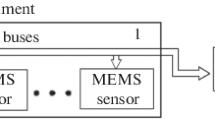Abstract
Introduction
The main problems of navigation in liver surgery are organ movement and deformation. With a combination of direct optical and indirect electromagnetic tracking technology, visualisation and positional control of surgical instruments within three-dimensional ultrasound data and registration of organ movements can be realised simultaneously.
Methods
Surgical instruments for liver resection were localised with an infrared-based navigation system (Polaris®). Movements of the organ itself were registered using an electromagnetic navigation system (Aurora®). The combination of these two navigation techniques and a new surgical navigation procedure focussed on a circumscribed critical dissection area were applied for the first time in liver resections.
Results
This new technique was effectively implemented. The position of the surgical instrument was localised continuously. Repeated position control with observation of the navigation screen was not necessary. During surgical resection, a sonic warning signal was activated when the surgical instrument entered a “no touch” area—an area of reduced safety margin.
Conclusion
Optical tracking of surgical instruments and simultaneous electromagnetic registration of organ position is feasible in liver resection.




Similar content being viewed by others
References
Joyce DL, Wahl RL, Patel PV, et al. Preoperative positron emission tomography to evaluate potentially respectable hepatic colorectal metastases. Arch Surg. 2006;141:1220–6.
Hohlweg-Majert B, Schon R, Schmelzeisen R, et al. Navigational maxillofacial surgery using virtual models. World J Surg. 2005;29:1530–8.
Hamada H, Hayashi N, Asahi T, et al. Efficacy of a navigation system in neuro-endoscopic surgery. Minim Invasive Neurosurg. 2005;48:197–201.
Lang H, Radtke A, Hindennach M, et al. Impact of virtual tumor resection and computer-assisted risk analysis on operation planning and intraoperative strategy in major hepatic resection. Arch Surg. 2005;140:629–38.
Satava RM. Emerging technologies for surgery in the 21st century. Arch Surg. 1999;134:1197–202.
Herline AJ, Stefansic JD, Debelak JP, et al. Image-guided surgery: preliminary feasibility studies of frameless stereotactic liver surgery. Arch Surg. 1999;134:644–9.
Beller S, Hünerbein M, Eulenstein S et al. Feasibility of navigated resection of liver tumors using multiplanar visualization of intreaoperative 3D ultrasound data. Ann Surg. 2007;246:288–94.
Kleemann M, Hildebrand P, Birth M, et al. Laparoscopic ultrasound navigation in liver surgery: technical aspects and accuracy. Surg Endosc. 2006;20:726–9.
Marvik R, Lango T, Tangen GA, et al. Laparoscopic navigation pointer for three-dimensional image-guided surgery. Surg Endosc. 2004;18:1242–8.
Lange T, Eulenstein S, Hunerbein M, et al. Vessel-based non-rigid registration of MR/CT and 3D ultrasound for navigation in liver surgery. Comput Aided Surg. 2003;8:228–40.
Beller S, Hünerbein M, Lange T, et al. Image-guided surgery of liver metastases by 3D ultrasound based optoelectronic navigation. Br J Surg. 2007;94(7):866–75.
Munjuluri B, Huebschman ML, Garner HR. Rapid hologram updates for real-time volumetric information displays. Appl Opt. 2005;44:5076–85.
Grenacher L, Thorn M, Knaebel HP, et al. The role of 3-D imaging and computer-based postprocessing for surgery of the liver and pancreas. Rofo. 2005;177:1219–26.
Chopra S, Hünerbein M, Eulenstein S et al. Development and validation of a three dimensional ultrasound based navigation system for tumor resection. Eur J Surg Oncol. 2007;34(4):456–61
Koulechov K, Strauss G, Dietz A, et al. FESS control: realization and evaluation of navigated control for functional endoscopic sinus surgery. Comput Aided Surg. 2006;11:147–59.
Conflict of interest statement
No financial or personal relationship with any organisation exists that could inappropriately bias this work.
Author information
Authors and Affiliations
Corresponding author
About this article
Cite this article
Beller, S., Eulenstein, S., Lange, T. et al. Upgrade of an optical navigation system with a permanent electromagnetic position control. J Hepatobiliary Pancreat Surg 16, 165–170 (2009). https://doi.org/10.1007/s00534-008-0040-z
Received:
Accepted:
Published:
Issue Date:
DOI: https://doi.org/10.1007/s00534-008-0040-z




